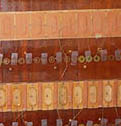
Chapter 21.3 Testing the Pouches
The pouches, and their associated channels and gaskets, are tested in two stages. Since it is almost impossible to get to the lower row of pouches once the upper row cups are installed, these are tested first. After the board mounted pouches are glued on, tape over every other hole in the manifold boards so only the lower pouches are open to the secondary pneumatic channels. Also tape horizontally over all the holes except for one row to start. Install that pouchboard (the others are loosely installed to keep the tape from blowing off), and test the lower pouches as described below. The screwholes for the rank lids intersect the pouch wells and form a leak, so they have to be covered with masking tape on the pouch board edges.

Each board is tested in turn; after one is done, another is added and tested. Once complete, it is not necessary to remove the last tested board before adding another. When the lower pouches are all completely tested as described below, the boards are taken down and the second layer of cup mounted pouches are installed as described in the previous chapter.
Then, working one row at a time, all the tape is
removed from the manifold holes, and the boards are reattached, Now
the additional 29 upper pouches can be tested.
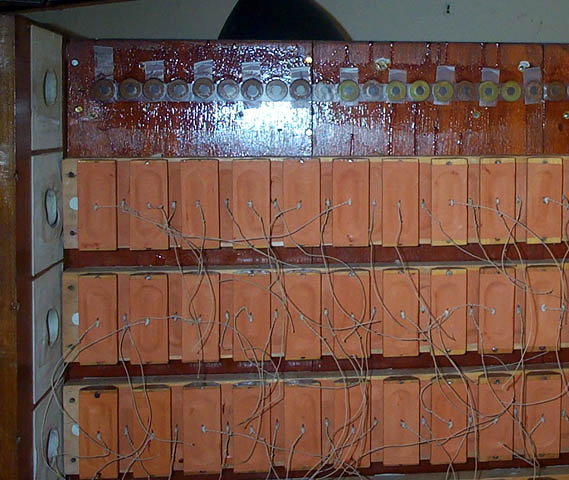
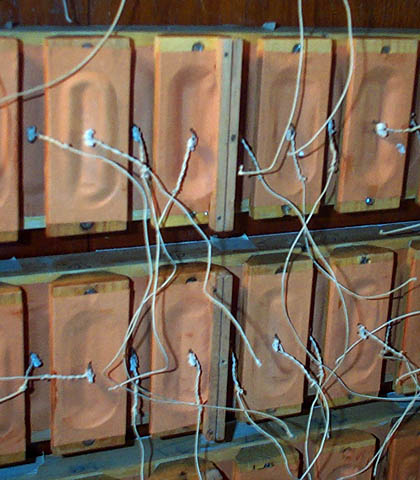
When the organ is winded, all the secondary channels, and thus all the pouches, are inflated. If there any leaks, they can be detected by ear, by holding a wet hand nearby, or by using a stethoscope. As any key is pressed, that secondary channel is vented, and that pouch can be collapsed with the finger. (Normally, pressure inside the assembled rank chest would collapse that pouch and pull the pallet open, if that rank were turned on.) When one releases the key, the pouch is reinflated, and the pouch pops quickly back out. It is easy to feel this action with one's finger.
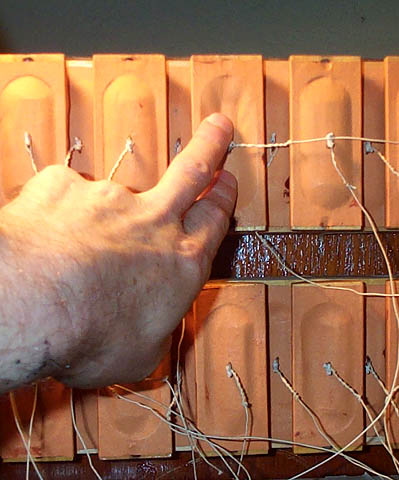
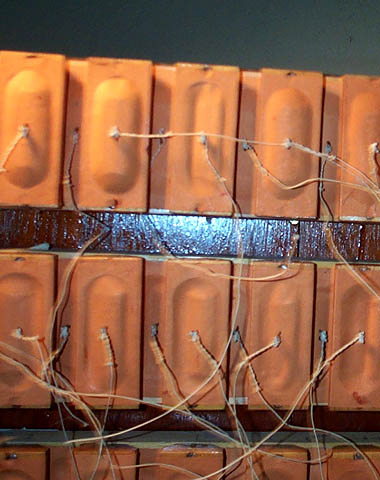
After all the ranks are done, there are now 348 inflated pouches, with 797 square inches of pouch leather holding back the wind. Pouch leather is known to be pretty porous, and I wondered if this waste would be too much. Did Aeolian treat these pouches with egg white or rubber cement? But I measured the wind consumption attributable to these pouches alone, by counting pump strokes; first with all the manifold holes taped, and then with all the pouches winded. I came up with 5.94 CFM, a comparatively trivial amount compared to the 14 CFM consumed by one 16' CCC reed. So I left them alone for the time being.